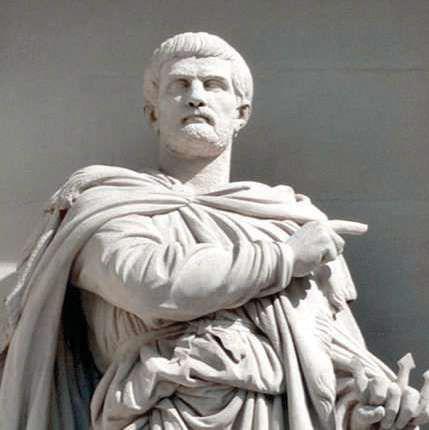Pytheas was a Greek adventurer and geographer from the colony of Massalia (modern-day Marseille). In around 325 B.C., he journeyed to northwestern Europe and circumnavigated Great Britain. He was the first to describe Scandinavia, but his description has been lost. He is frequently referred regarded be the world’s first known explorer in the modern sense. Pytheas is the first individual documented as having visited the Arctic, polar ice, and Germanic tribes. Merchants in his native city of Massalia commissioned him to locate a path to the Carthaginian-controlled tin mines in southern Britain. In an effort to break the monopoly, the Greeks sought a dependable route to the tin mines. Pytheas circumnavigated a significant chunk of Great Britain and documented the territory in his now-lost book. Additionally, he detailed the “Island of Thule” in this book. In antiquity, Thule was occasionally identified as Iceland or Greenland, leading to the assumption that Pytheas may have reached Iceland. As an intelligent astronomer, he was among the first to propose that the moon influences the tides.
Childhood & Early Life
- Pytheas was born on the south coast of France in the Greek colony of Massalia (now called Marseilles). The actual year of his birth and family information is unknown. According to some sources, he was born about 350 B.C., while others claim he was born around 380 B.C.
Later Life
- How precisely Pytheas’s trips began is unknown. It is thought that merchants in his own city dispatched him on his trips to locate a path to the tin mines of southern Britain, which were the supply of this precious metal for all of Europe and the Mediterranean.
- The Carthaginians (from the city of Carthage in modern-day Tunisia) had blocked the Strait of Gibraltar, the entrance to the Atlantic Ocean from the Mediterranean, to all ships from other nations, thus they had complete control over the tin trade. The Greeks sought to find an alternate way to the mines in order to break their monopoly.
- Pytheas began his journey in the latter half of the fourth century BCE. Since the Strait of Gibraltar was shut, he most likely traveled the overland or embarked on his expedition during the Carthaginians’ battle with Syracuse in Sicily (310-306 BC). It is unknown how he reached the port of Corbilo at the mouth of the Loire River, but he did it successfully.
- From there, he most likely followed the European coastline to the point of Brittany and then sailed to Belgium (Land’s End) in Cornwall, where the tin mines were located.
- He claimed to have traversed a significant portion of Great Britain on foot and kept a thorough trip journal. He determined its circumference to be precisely 4,000 kilometers (6,400 km). In addition, he described how the residents of Belgium collected tin from the mines and engaged in commerce.
- To continue his journey, he set sail from Cornwall and traversed the Irish Sea between Britain and Ireland to reach the northernmost tip of Scotland. He may have even reached the mouth of the Vistula River on the Baltic Sea during his journeys. Beyond northern Scotland, Pytheas named another region the “Island of Thule.”
- It is unknown if Pytheas visited Thule or simply described it based on what he had heard. On the basis of his descriptions of the area, it is likely that Thule was in Norway in the vicinity of Trondheim, but alternative places have also been proposed.
- In the end, he returned to Britain and sailed across the North Sea to the North Frisian Islands off the coast of Germany. Additionally, he discovered Heligoland, which he named Abacus. Finally, he went home by sailing down the coast of Europe.
Major Works
- Pytheas sailed to Britain, the Baltic Sea, and the Arctic Circle on the oldest expedition ever documented. His adventures were detailed in the memoir Periplus,’ which was extensively read in antiquity. On his historic expedition, he circumnavigated and explored a significant portion of Great Britain, precisely determining its circumference to be 4,000 miles (6,400 km).
- He was the first person to describe the Midnight Sun and the first to link the tides with the phases of the moon. He may have been the only source of information about the North Sea and subarctic parts of Western Europe for subsequent eras.
Personal Life & Legacy
- The specifics of his personal life remain obscure. Even his death date is buried in obscurity. It is thought that he died between 300 BC and 285 BC.
Do you want to know who Sofia Franklyn is dating? Click here!
Author Profile

- Linda’s right hand, Kenneth has been working with Linda for years, helping in planning, managing, and editing projects.

























